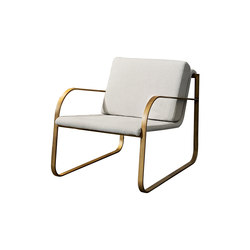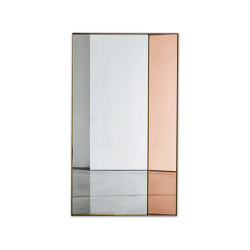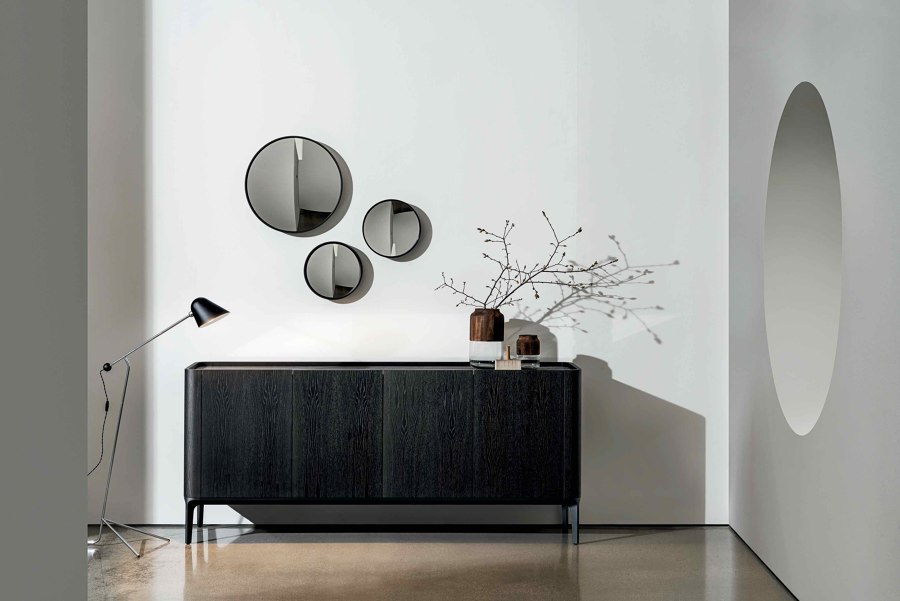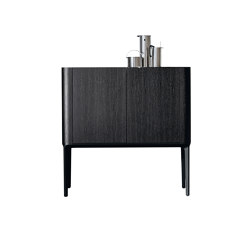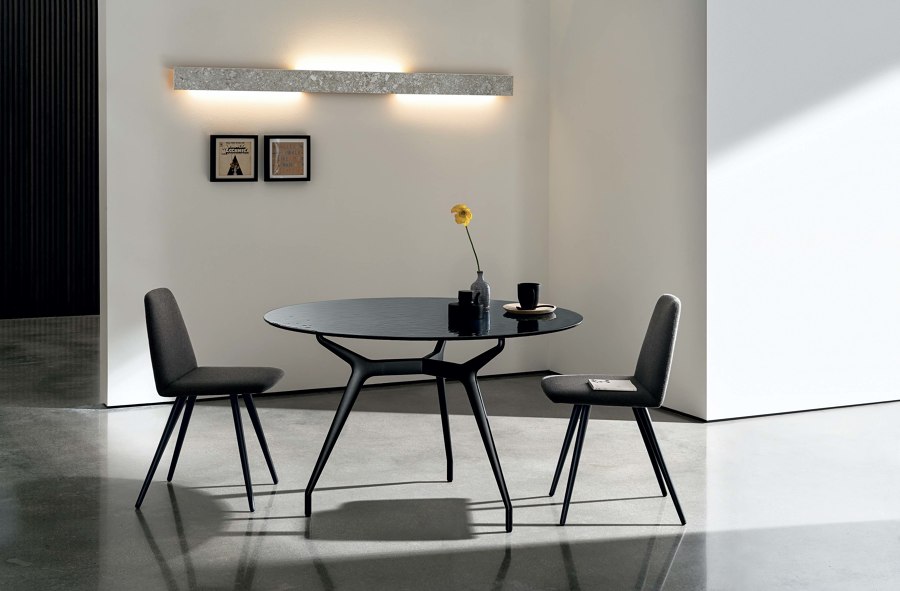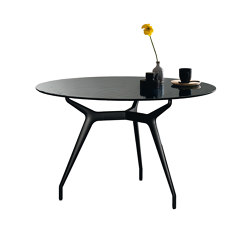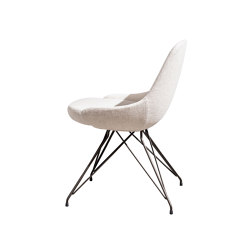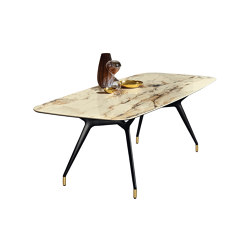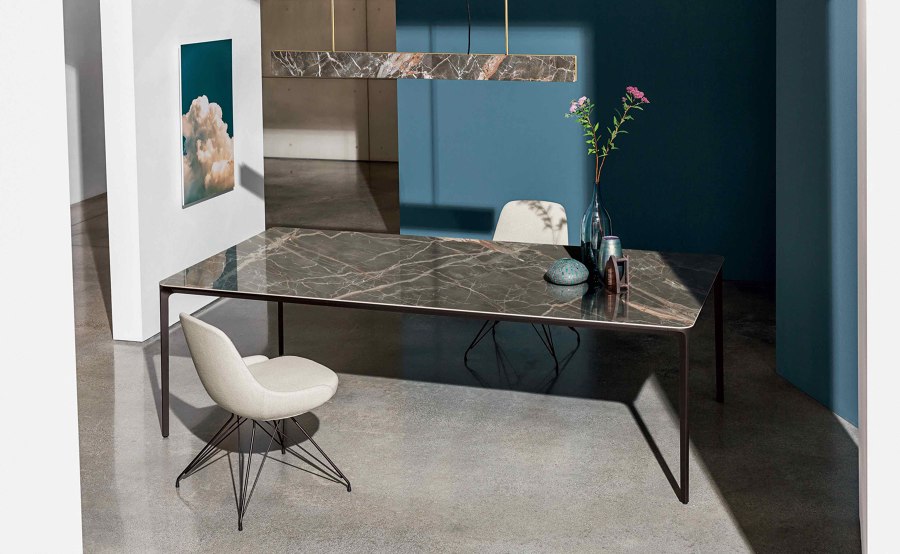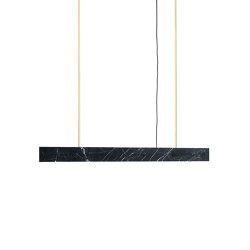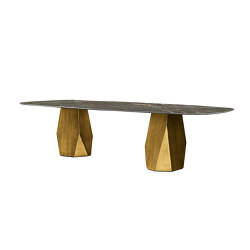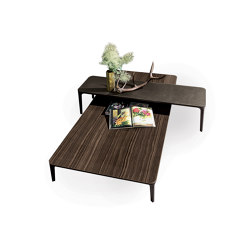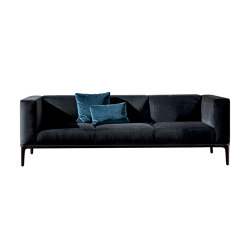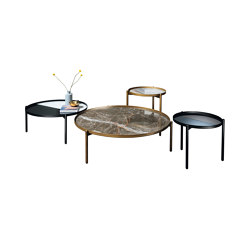Sovet’s material expansion
Historia de la marca de Emma Moore
Biancade Treviso, Italia
24.11.21
Glass specialists Sovet’s furniture pieces blend together an expansive palette of colours, materials and textures, combining ceramics, woods and metals with a trademark smooth glass finish.
Known for its expertise in glass, Sovet is now exploring a rich palette of additional materials such as ceramic, metals, fabrics and woods, with which to blend its primary material
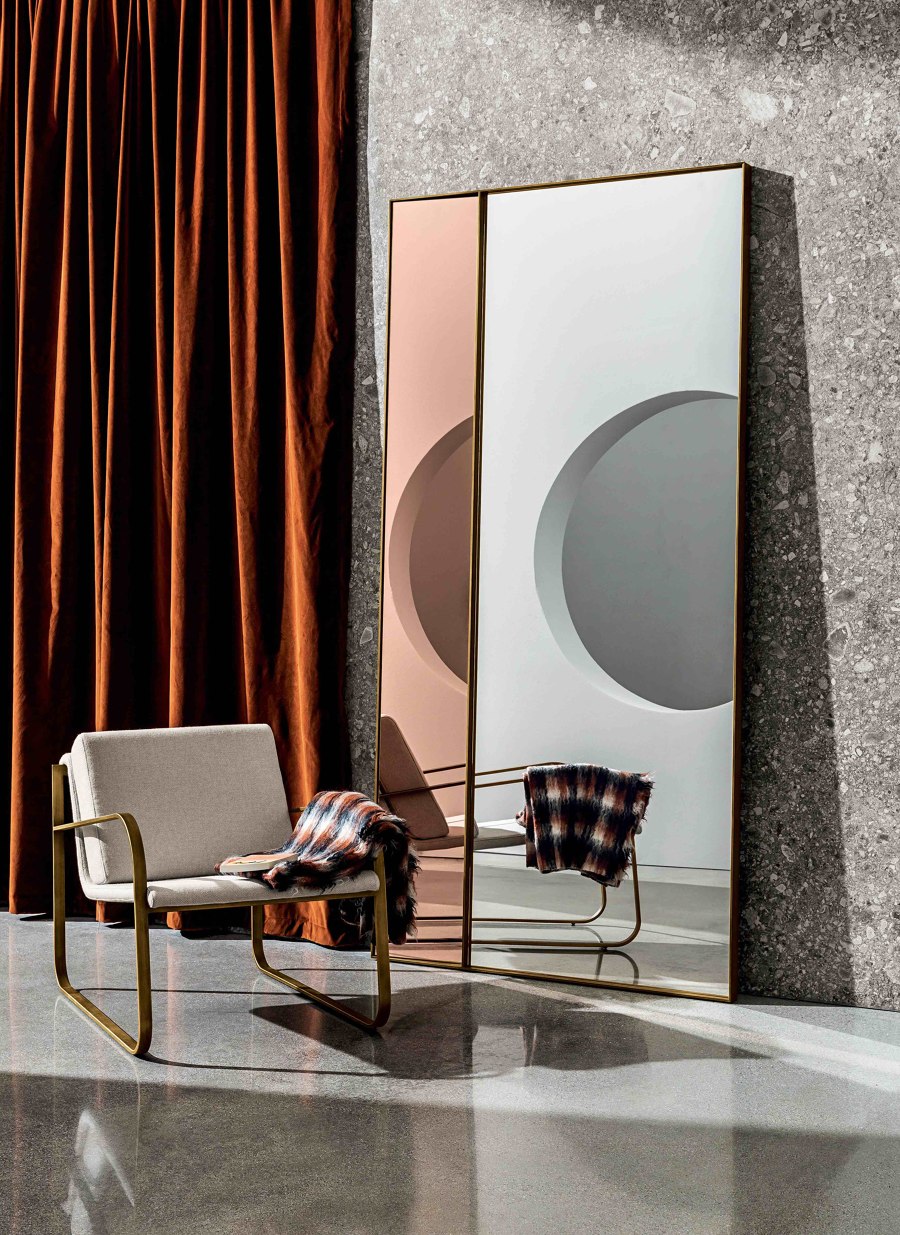
Known for its expertise in glass, Sovet is now exploring a rich palette of additional materials such as ceramic, metals, fabrics and woods, with which to blend its primary material
×Mixing materials and textural finishes is the route to designing an interior that emits warmth and character.
‘It’s painting by numbers!’ I always remember the damning indictment delivered to a stylist by an interiors editor once. It was shorthand for the apparently amateurish matching of colours or materials across a space; taking one accent and slavishly repeating it to tie things together visually. I made a mental note. This was definitely something I did, but seemingly it was unimaginative. Not to mention clinical.
The Slim sideboard demonstrates how the new palette of materials mix harmoniously within one piece. An aluminium structure supports wooden cupboards and a top made from ceramic or glass

The Slim sideboard demonstrates how the new palette of materials mix harmoniously within one piece. An aluminium structure supports wooden cupboards and a top made from ceramic or glass
×Fast forward a decade or two, and we are all now adept at mixing things up. Our eyes are more accustomed to unusual colour pairings and textural layering. In fact mixing materials wildly within four walls – even mixing the materials on those walls – is de rigueur, a sign of confidence and competence in the art of designing interiors. It also represents an understanding that there is more warmth and emotion instilled into a space when materials mix. And if ever we needed more comfort in our home environment, it’s now, when it has become our everything.
The Arkos table takes its formal cues from 1950s Italian design icon Ico Parisi. Updated for the 21st century, it combines die-cast aluminium legs with a glass, ceramic or wooden top
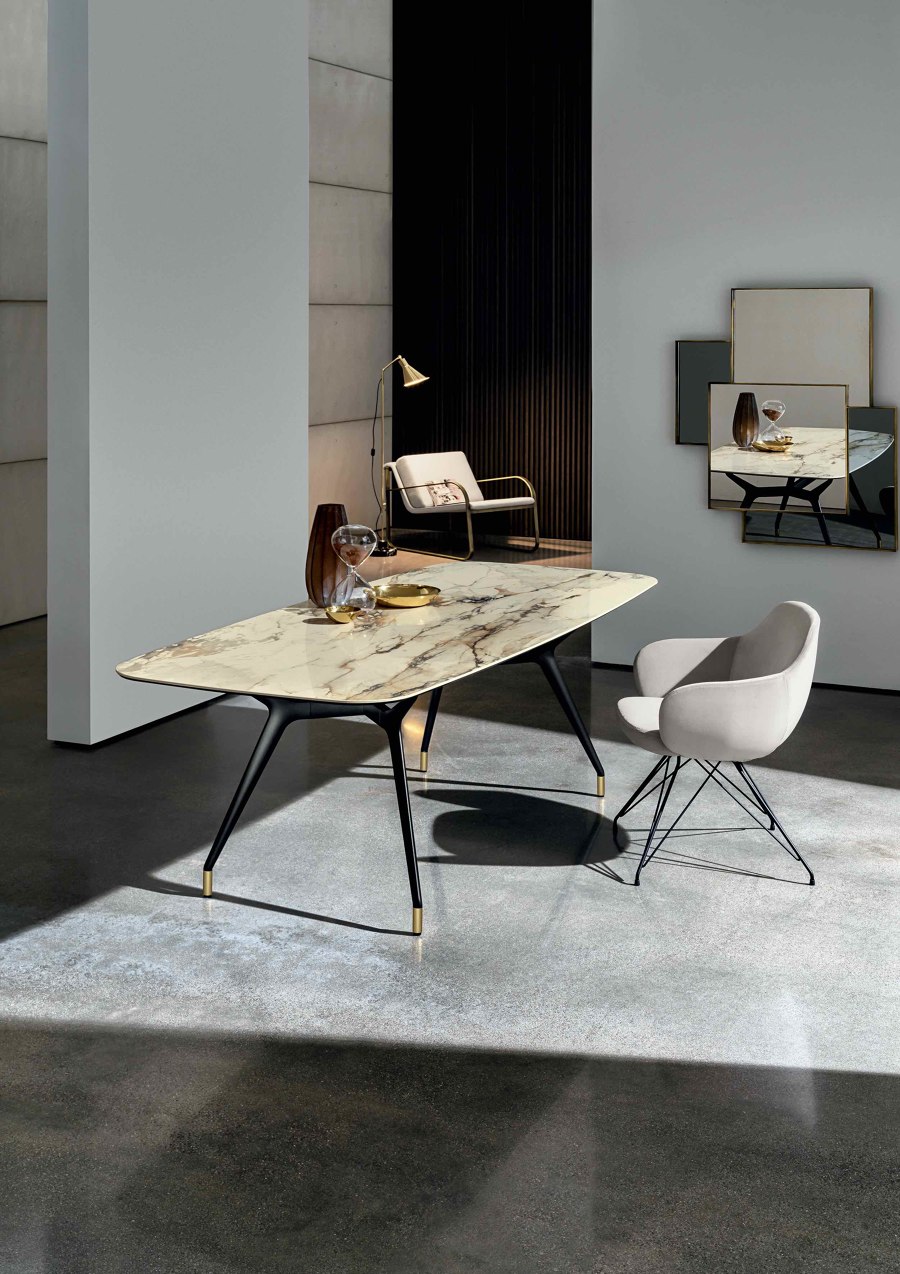
The Arkos table takes its formal cues from 1950s Italian design icon Ico Parisi. Updated for the 21st century, it combines die-cast aluminium legs with a glass, ceramic or wooden top
×Material layering
‘A textural palette is as important as a colour palette now,’ says Gianluigi Landoni, Creative Director of Italian furniture makers, Sovet . ‘We mix different materials within a piece according to colour or textural affinity. In this way two elements like glass and ceramic can gain warmth.’ Take Sovet’s new Campos coffee table by Altherr Désile Park; its circular top is sliced through the middle and on one side is mirrored glass, on the other is ceramic. Its frame and legs are made from metal in a choice of finish. The table maintains the minimal, timeless signature of the Italian brand in its form, but the juxtaposed materials bring an expressive quality to the piece. The Madia Slim sideboard, meanwhile, another new Sovet design, brings character and comfort by blending wood with an aluminium structure and a contrasting ceramic or Net glass top.
Sovet’s broadening portfolio of products now includes versatile lighting; the Traled family of wall and pendant lamps is strikingly minimal in form but expresses its personality through its textured finishes
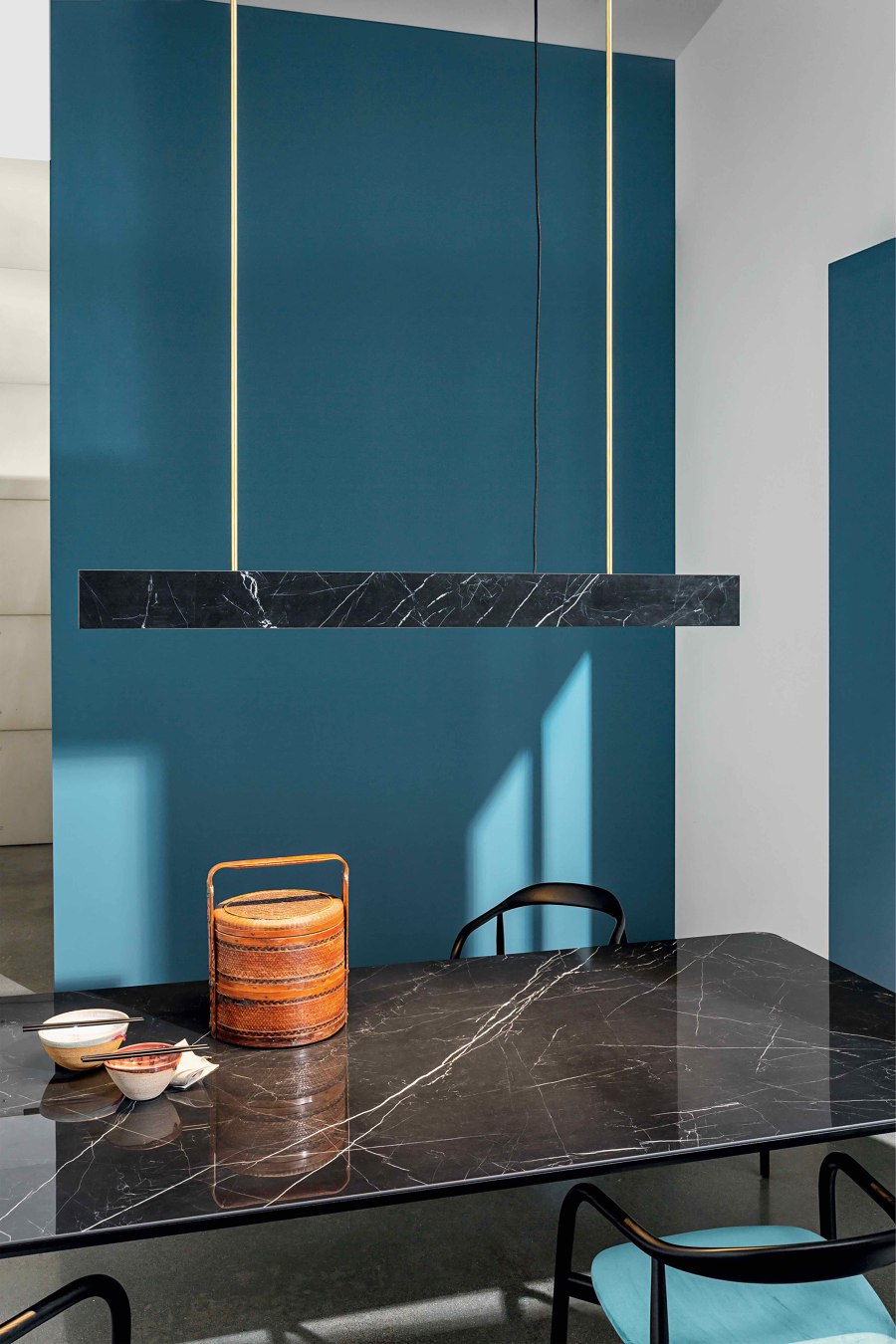
Sovet’s broadening portfolio of products now includes versatile lighting; the Traled family of wall and pendant lamps is strikingly minimal in form but expresses its personality through its textured finishes
×Layering materials of course isn’t new. Some of the mixing cues we see today are taken from the mid-century tradition where brass would invariably dance with opaque glass in American light fittings, wood and ceramics slotted together on Scandinavian dining tables and marble and bronze would pair up as a prop for elegant cocktails. Around this time new and exciting industrially-produced materials would be among the layers too. This largely, in our age of biophilia and environmental consciousness, has left the equation and it’s the natural materials of wood and marble, ceramic, metals, glass and cane that are totem-ing together to form texturally-arresting furnishings today. Landoni’s new table design, Arkos even harks back to the aerodynamic, curvilinear silhouettes of 1950s domestic furniture in Italy, in particular Ico Parisi’s work, but to bring it into the present, he complements the glass top with sculptural die-cast aluminium legs.
Creative director, Gianluigi Landoni, has overseen Sovet’s development of new product families, including seating and lighting, with a view to creating what he calls a ‘new culture of living’

Creative director, Gianluigi Landoni, has overseen Sovet’s development of new product families, including seating and lighting, with a view to creating what he calls a ‘new culture of living’
×The versatility of glass
Sovet in fact established itself in the 1980s as furniture makers with an expertise in glass. And still today they deftly craft glass into a fine-tuned material, finished with rich tones, lacquered or mirrored, frosted or smoked, with a ‘net’ textured surface or with the innovative, irregular Materia or Liquid Glass surface. ‘Glass is always the main protagonist, the starting point of the company and a very important part of its know-how,’ explains Landoni. ‘Modern processing techniques and countless finishes have given it a new life. It is no longer relegated to the world of accessories, or to a technical function, but is a main player in the world of interior design.’
Altherr Désile Park have collaborated with Sovet on the design of the Campos coffee table, which graphically mixes mirrored glass and ceramic in its round surface
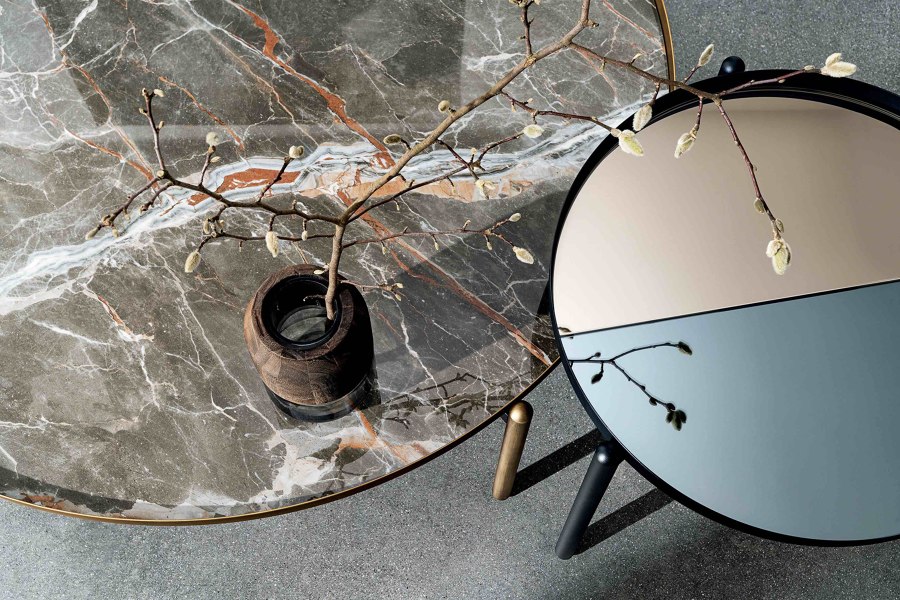
Altherr Désile Park have collaborated with Sovet on the design of the Campos coffee table, which graphically mixes mirrored glass and ceramic in its round surface
×Customising the mix
But the company has found room for more materials in its library too and in order to build on its portfolio and make of its collection a full and contemporary inventory of furnishings from light fixtures to swivel chairs, Landoni has been introducing a rich palette of Italian-sourced and -crafted ceramics (with marble or natural stone effects such as 'Ceppo di Gré’), fabrics, leathers, metals and woods, to blend with the brand’s beloved glass. ‘Combining materials makes it easier to individualise the furnishing of an interior. Ceramic, glass and metal offer a wide range of finishes and colours that mean many opportunities for customisation.’ says Landoni.
The styling rulebook may have been thrown out long ago, but when brands themselves embark on customisable textural adventures, building a characterful but coherent interior is as easy as, well, 123.
© Architonic


